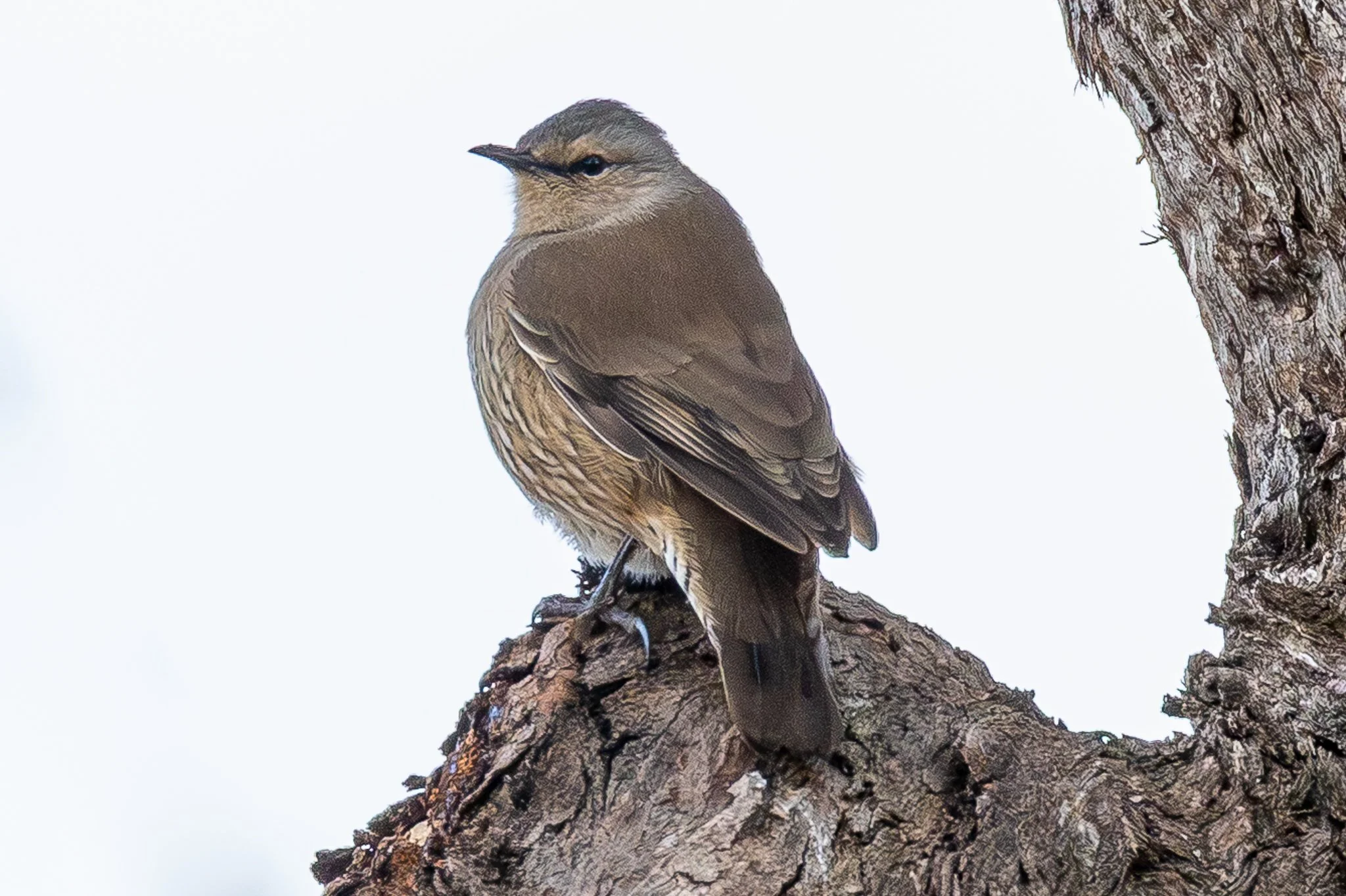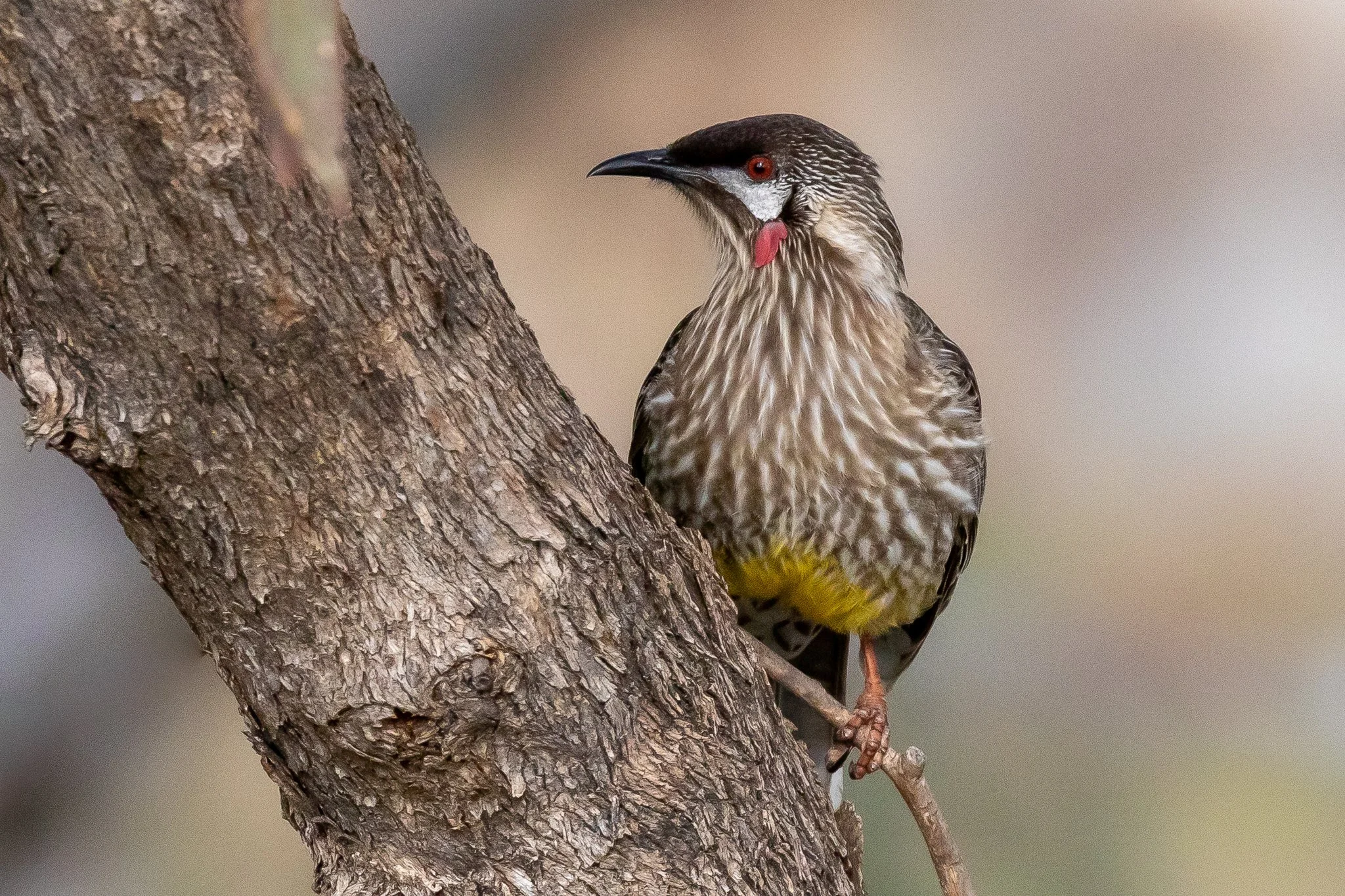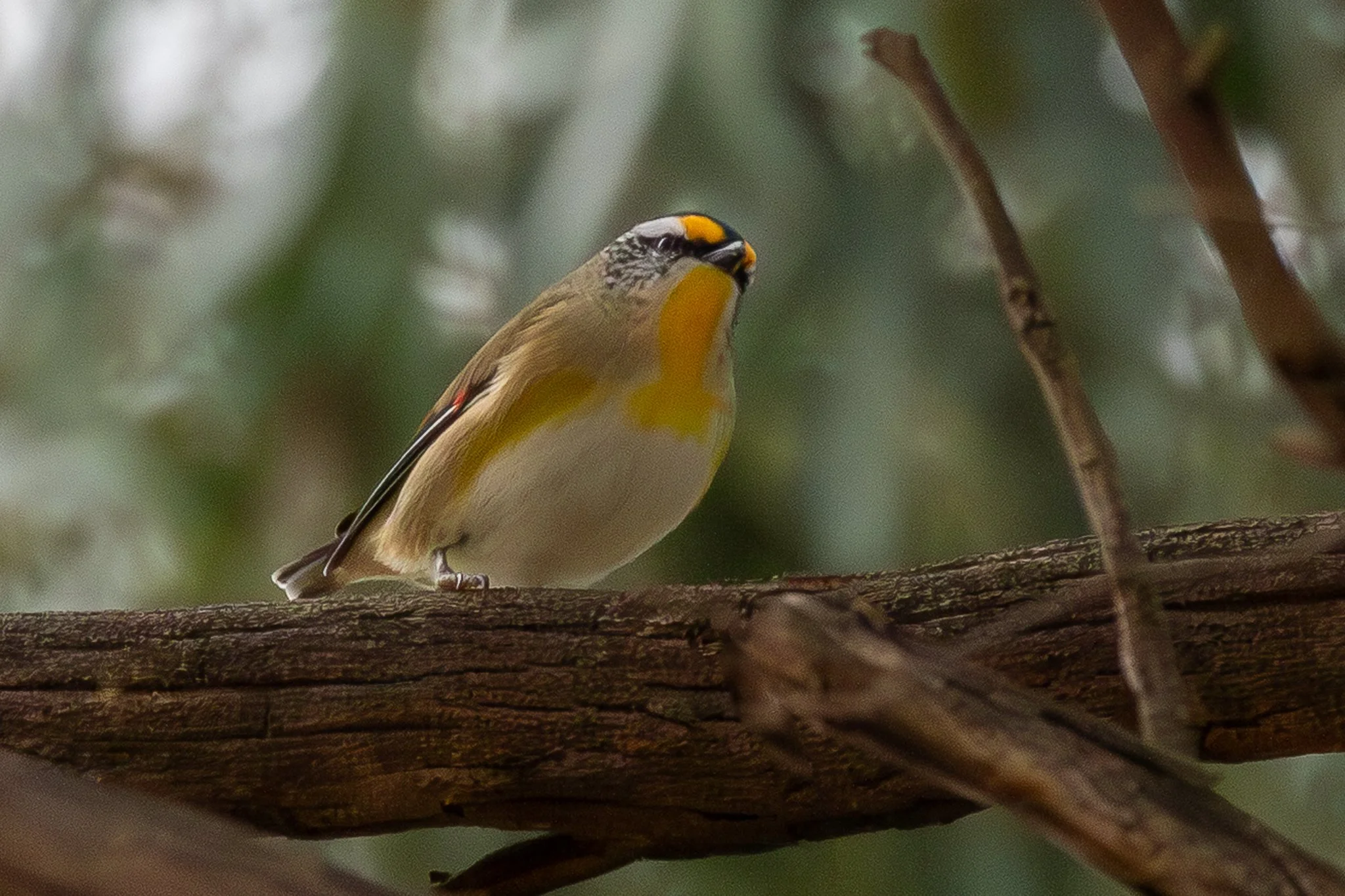Cowra was at its wintery best for this July’s winter survey of the Cowra Woodlands Bird Program. Only the diehards are keen to survey in winter and the blustery wind and rain fully met expectation. Bird numbers were low especially on the sites we were assigned to; predominantly small isolated remnant bush patches across the river plains. Nevertheless there were interesting birds to see and tales to tell.
The communal family groups of Apostlebirds, Choughs, and Babblers are always favorites in the woodlands travelling together and cooperating to build nests and look after the young. Apostlebirds form groups based around a breeding male, two or three breeding females plus their offspring (often making groups around 12 birds and hence Apostlebirds). This Apostlebird was in a small group of five, seen on Back Creek Road near the Seed Orchard, near Cowra.
Closeby was this Dusky Woodswallow. Later, during the survey, we saw eight Dusky Woodswallows in the same place. Very pleasing as I had not seen this species at Cowra for a number of years.
This Brown Treecreeper was sighted on a TSR (Travelling Stock Reserve) on the Lachlan Valley Highway. Other than a White-throated Treecreeper heard nearby, the rest of the birds were Noisy Miners and Magpies.
The dominant Honeyeater during the weekend was the White-plumed Honeyeater seen here. Yellow-faced Honeyeaters were quite common; others seen over the weekend included a Yellow-tufted Honeyeater, a White-eared Honeyeater and a White-naped Honeyeater.
Red Wattlebird photographed on the Cowra Common.
Pardalotes were present on a number of sites, both this Striated Pardalote and the Spotted Pardlote below.
Spotted Pardalote feeding on the Cowra Common.
This Brown Falcon was feeding on the roadside just out of Cowra and flew into the tree as we approached.







